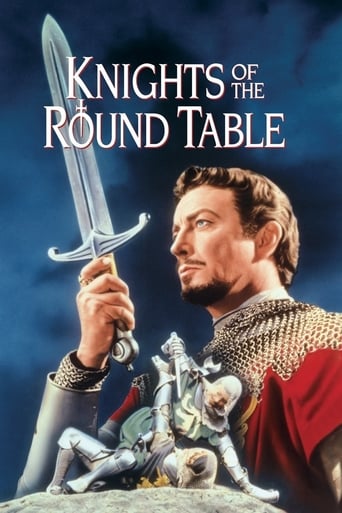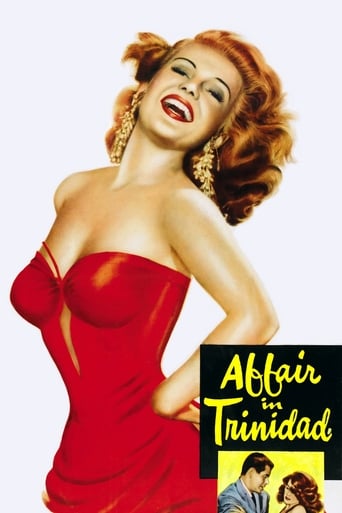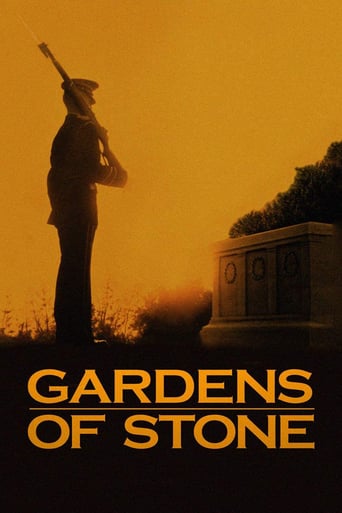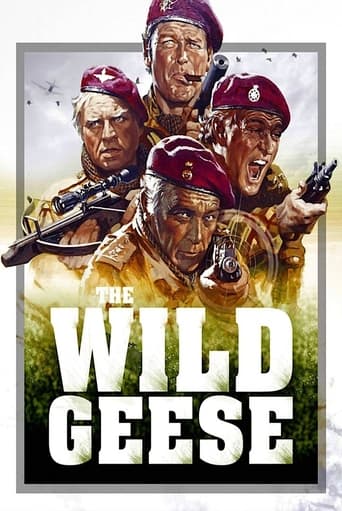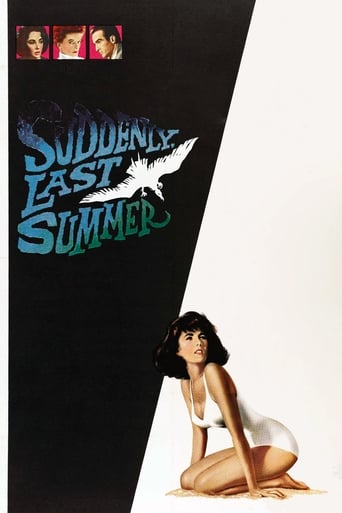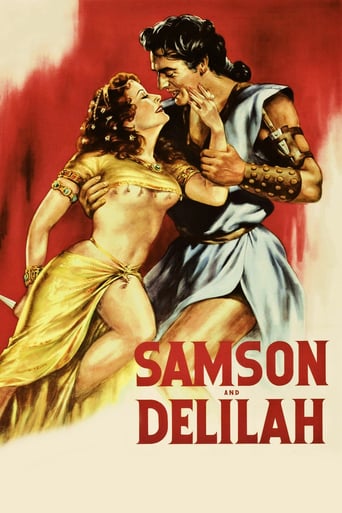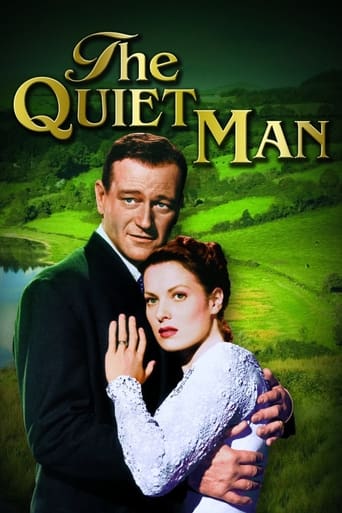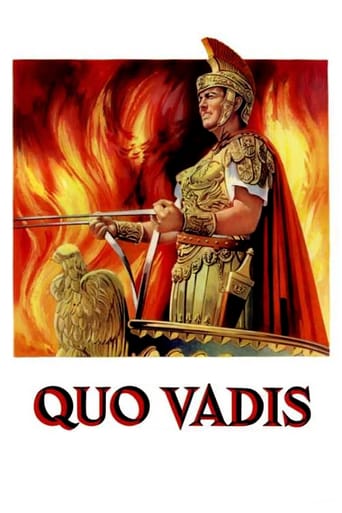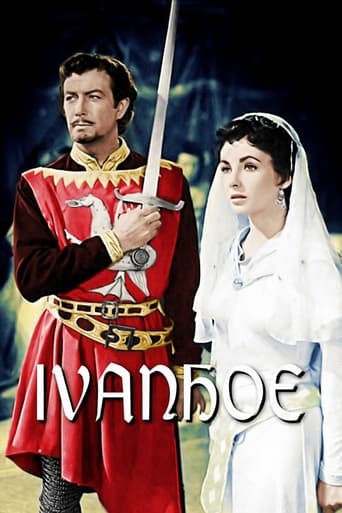


Ivanhoe
Sir Walter Scott's classic story of the chivalrous Ivanhoe who joins with Robin of Locksley in the fight against Prince John and for the return of King Richard the Lionheart.
-
- Cast:
- Robert Taylor , Elizabeth Taylor , Joan Fontaine , George Sanders , Emlyn Williams , Robert Douglas , Finlay Currie


Similar titles
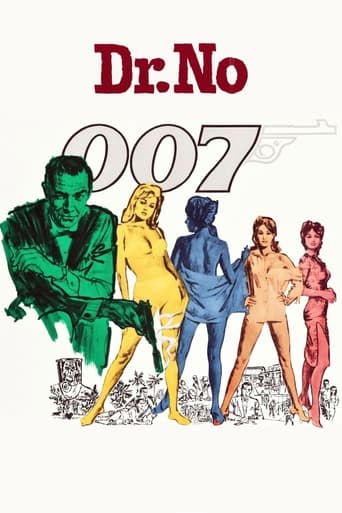
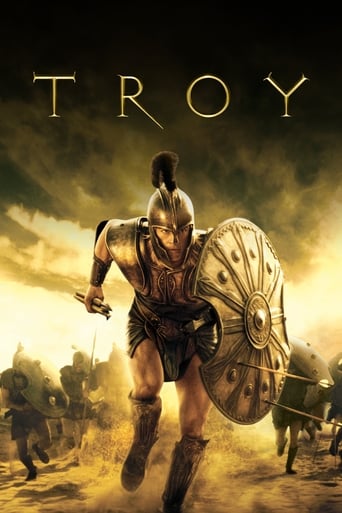
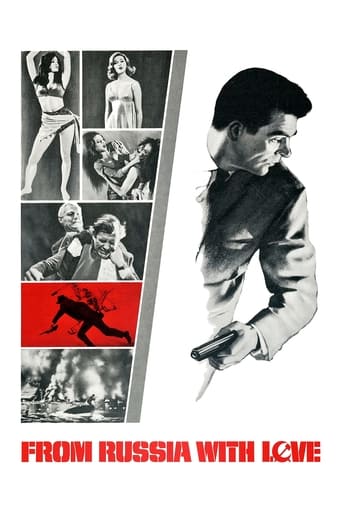
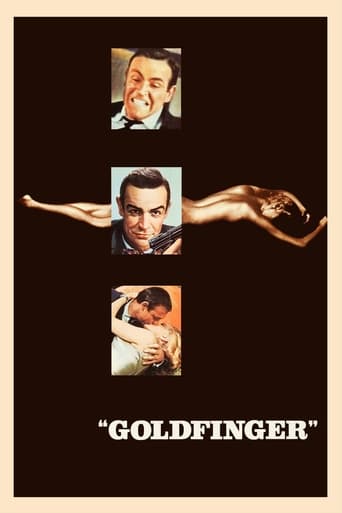

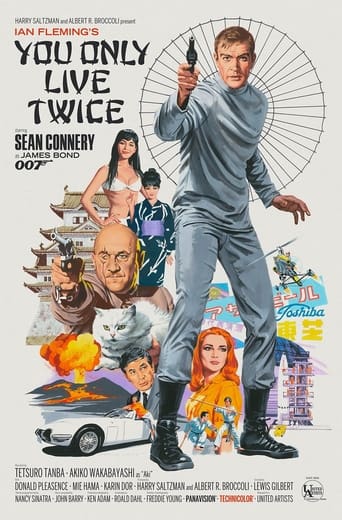
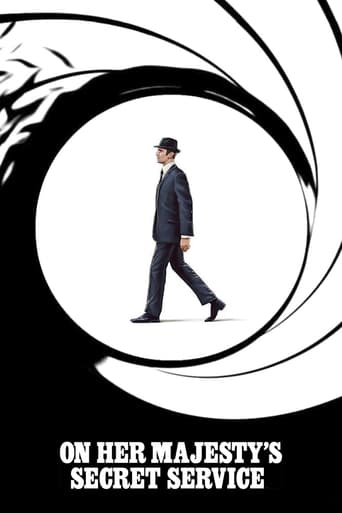

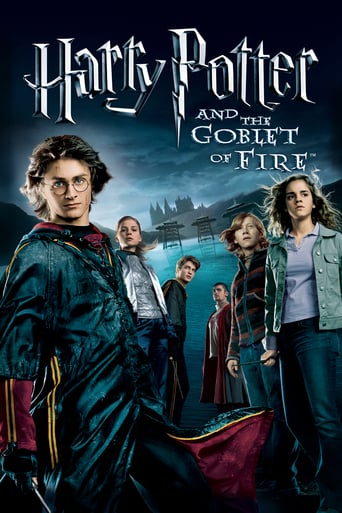
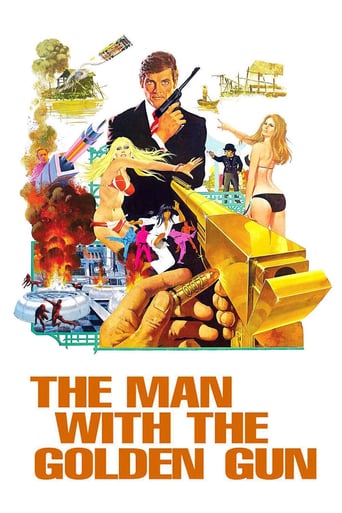
Reviews
I like movies that are aware of what they are selling... without [any] greater aspirations than to make people laugh and that's it.
If the ambition is to provide two hours of instantly forgettable, popcorn-munching escapism, it succeeds.
The story-telling is good with flashbacks.The film is both funny and heartbreaking. You smile in a scene and get a soulcrushing revelation in the next.
Great example of an old-fashioned, pure-at-heart escapist event movie that doesn't pretend to be anything that it's not and has boat loads of fun being its own ludicrous self.
Singing coach for Mr Taylor: Arthur Rosenstein. Archery coach: Colonel John M.T.F. Churchill. Produced by Pandro S. Berman at M-G-M's Elstree Studios in England and on location in Hatfield Woods. Copyright 30 June 1952 by Loew's Inc. A Metro-Goldwyn-Mayer picture. New York opening at the Radio City Music Hall: 31 July 1952 (ran 8 weeks). U.S. release: 20 February 1953 (sic). U.K. release: 13 September 1952. Australian release: 15 August 1952. 9,595 feet. 106 minutes. (Available on an excellent Warner DVD).NOTES: Nominated for the following prestigious Hollywood awards: Best Picture (won by The Greatest Show On Earth), Color Cinematography (won by The Quiet Man), Music Scoring of a Drama or Comedy (won by High Noon). With gross rentals of $6.3 million, number 4 at U.S./Canadian ticket windows for 1952. The film also took the number 4 position at the U.K. box-office. Perhaps because it was released for the winter-spring school holidays, the movie did far less business in Australia, though it did come in at the latter end of the top fifty box-office successes.COMMENT: The general impression that Ivanhoe is a schoolboy's movie is not borne out by the film itself. Crammed full of violent, exciting action in a fast-paced plot set in motion by a wonderfully dastardly trio of villains - superbly characterized by George Sanders, Robert Douglas and Guy Rolfe - Ivanhoe has been produced on a splendidly lavish scale that often staggers the senses. This is not to say that the actors are overwhelmed by pageant and panoply (though they do skilfully stand aside whilst hundreds of stuntmen do yeomen service in the many battle and siege scenes). True, Robert Taylor sometimes looks a trifle uncomfortable and out-of-place in medieval armor, but this clumsiness is due more to Thorpe's lack of competence in camera placement than to any deficiency of charisma on Taylor's part. Mostly he performs his chores with such dash, we forget his incongruous American accent. It's British-born Elizabeth Taylor who seems to have the wrong voice for the part (though she looks the beauty well enough).
King Richard is captured while returning from the crusades and his evil brother, Prince John (Guy Rolfe), is appointed acting king in his absence. A middle-order knight (Ivanhoe) seeks natural justice for his country and freedom for his former ruler.Hard to know the correct approach to take on this crowd-pleasing historical epic. Falling short as a history lesson (other than a few random nods at reality) it quickly boils down to nothing much more than a good versus evil parable that even a small child couldn't lose. The masterful MGM reading the whole thing as nothing more than a well-financed and staged pot-boiler.The casting of Robert Taylor in the lead role is curious because being a knight and warrior is a young man's game and he is - despite his permed hair and clever make-up - clearly approaching middle-age. Still he does a good job when not being replaced by a stuntman.Evil brother and stand-in king Guy Rolfe is brilliant in the role and maybe the best acting on show. All snarl and beard stroking. Liz Taylor is a bit all-at-sea, which the director simply disguises by making her stand stock still while the camera takes in her staggering early beauty.The whole affair puts me in mind of Raiders of the Lost Arc where after being entertained for a couple of hours you are left reflecting of the things you could have been doing other than being entertained. Still simple entertainment isn't something to be sneezed at...
MGM shot Ivanhoe in Britain and gone for that old fashioned Hollywood adventure in the same vein as Errol Flynn's Robin Hood but less successfully.Baddie Prince John is scheming for the throne of England as his brother King Richard is held for ransom.It is an amiable rip roaring adventure, Walter Scott's classic story is distilled, Robert Taylor is too stiff as the Saxon knight who dislikes the Normans. Elizabeth Taylor and Joan Fontaine provide the allure as two women of different faiths that have fallen for him.George Sanders is the hissable villain, the champion knight of King John but his love for Jewish Rebecca is sincere. Guy Rolfe is having a hoot as the despicable King John.The film was made in 1952 and there is some allusion to McCarthyism.
"Ivanhoe" was one of a trilogy of films on mediaeval subjects made by director Richard Thorpe and producer Pandro S. Bermans for MGM in the early 1950s; the others were "The Knights of the Round Table" and "The Adventures of Quentin Durward" which, like "Ivanhoe", was based upon a novel by Sir Walter Scott. All three films shared the same leading man, Robert Taylor. Hollywood was going through something of a romance with the Middle Ages during the fifties, "The Black Shield of Falworth" being another example. The reason was doubtless that producers were attracted by the colourful pageantry of the era at a time when the cinema needed to make maximum use of spectacle as a weapon in its battle with television. The story is essentially a variant on the Robin Hood legend. Although Robin appears in the film, the main character is Wilfred of Ivanhoe, one of England's few remaining Saxon aristocrats. Ivanhoe, who has fought with Richard the Lionheart in the Crusades and has become estranged from his father, Cedric, who objects to his son fighting for a Norman king. (I have often wondered about the historical accuracy of Scott's basic premise; I would have thought that, by the late twelfth century, a century and a quarter after the Conquest, any surviving Saxon noble families would have become culturally indistinguishable from their Norman neighbours). There are two interconnected strands to the plot. One concerns Ivanhoe's attempts to prevent Richard's treacherous brother, Prince John, from usurping the crown. Richard is being held hostage by Leopold of Austria, and Ivanhoe needs to raise an enormous sum to ransom him. The second strand concerns a love-triangle; Ivanhoe is in love with his father's ward, the Lady Rowena, but is loved by Rebecca, the beautiful daughter of a rich Jewish merchant. The triangle becomes a rectangle when the Norman knight Sir Brian de Bois-Guilbert falls in love with Rebecca. Rebecca is played by a young Elizabeth Taylor who, apparently, felt she had been miscast in the role and would have preferred to have been cast as Rowena. Yet although it is Rowena who eventually wins the heart of the hero, it is Rebecca who has more screen-time and is the more complex character, an educated woman who has studied medicine and a courageous heroine who refuses to renounce her Jewish faith under persecution. This was one of Taylor's more interesting films in the early fifties, not the most distinguished period in her career and a time when producers seemed keener to cast her as eye-candy than in substantial roles, that other historical drama "Beau Brummell" being a good example. To my mind it was Joan Fontaine as Rowena who seemed miscast, being too old for the part. (The mediaeval nobility generally married young; a thirty-five year-old spinster would have been regarded as destined to die an old maid). Elizabeth's unrelated namesake Robert is good in the leading role, although the best performance among the male cast members comes from George Sanders. Sanders was often good as a villain, and at first it seems that the arrogant aristocrat Bois-Guilbert will turn out to be another such character. Yet Sanders shows us that Bois-Guilbert, unlike Guy Rolfe's Prince John, is not altogether villainous; he achieves a certain redemption through his love for Rebecca and his attempts to protect her from her persecutors. The characterisation, particularly of Rebecca and Bois-Guilbert, is surprisingly deep for a film of this nature, but "Ivanhoe" is nevertheless essentially an adventure film, and I suspect that most of its original audience in 1952 would have watched it for excitement and spectacle, not in order to analyse its character development. Fortunately, the film is not lacking in these departments either, and there are some splendid action sequences, particularly the attack on the castle and the final duel between Ivanhoe and Bois-Guilbert. The result is a highly entertaining adventure, as watchable today as it was sixty years ago. I am not surprised that it earned a "Best Picture" Oscar nomination. 7/10 Some goofs. At the beginning of the film we see the Royal Arms of England with the now-familiar lion and unicorn supporters. In fact, supporters were not used in heraldry until the fourteenth century and the unicorn was not added to the Royal Arms until the Union of Crowns with Scotland in 1603. Why is Rebecca's father referred to as "Isaac of York" when he comes from Sheffield? We see a church in Sheffield with a "Rhenish Helm" tower, a continental style of architecture unknown in England apart from one isolated example in Sussex. More seriously from the point of view of the plot, Rebecca is sentenced to be burnt as a witch, even though witchcraft was not regarded as a crime in the twelfth century. (The great era of witch-hunts did not begin until the early fifteenth century; in the earlier Middle Ages the Church regarded belief in witchcraft as an un-Christian superstition). This particular goof, however, originated in Scott's novel, and the film-makers clearly did not want to depart from his plot too radically.

